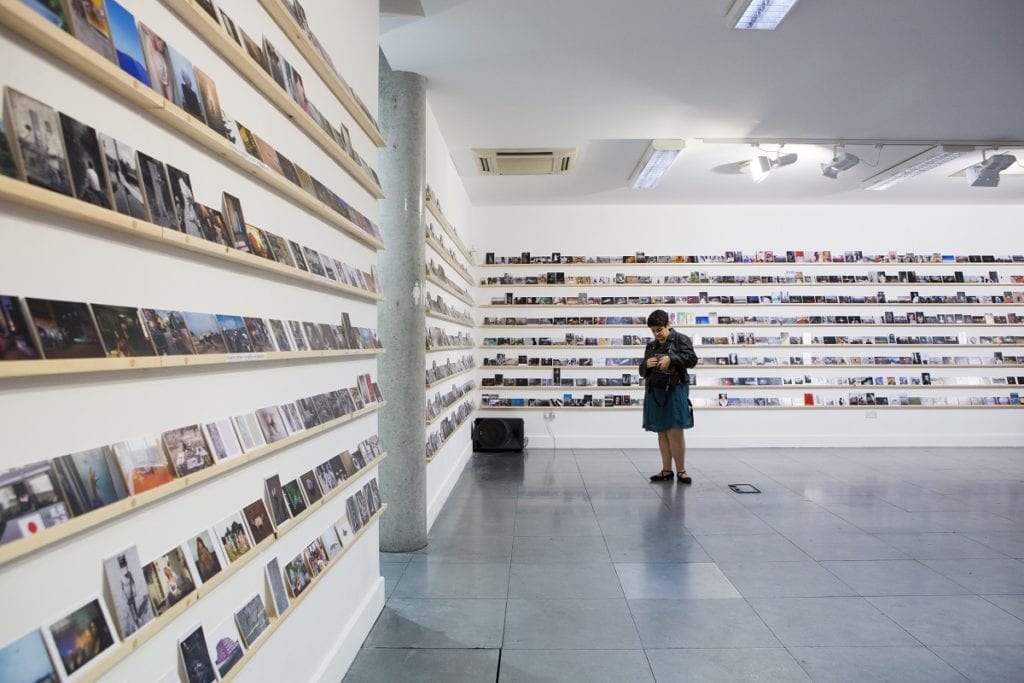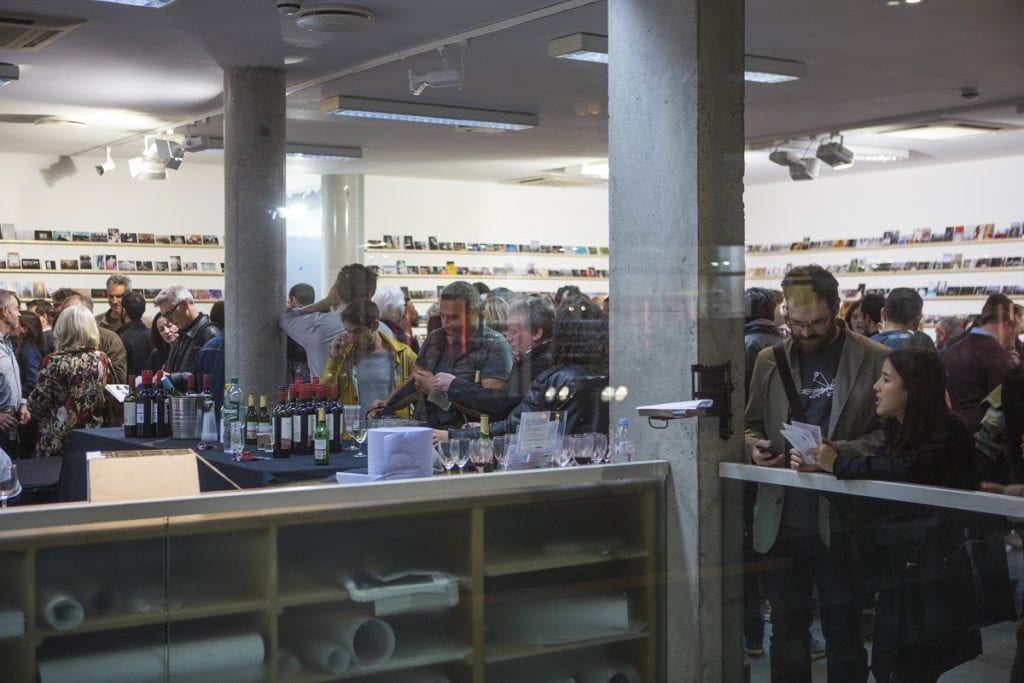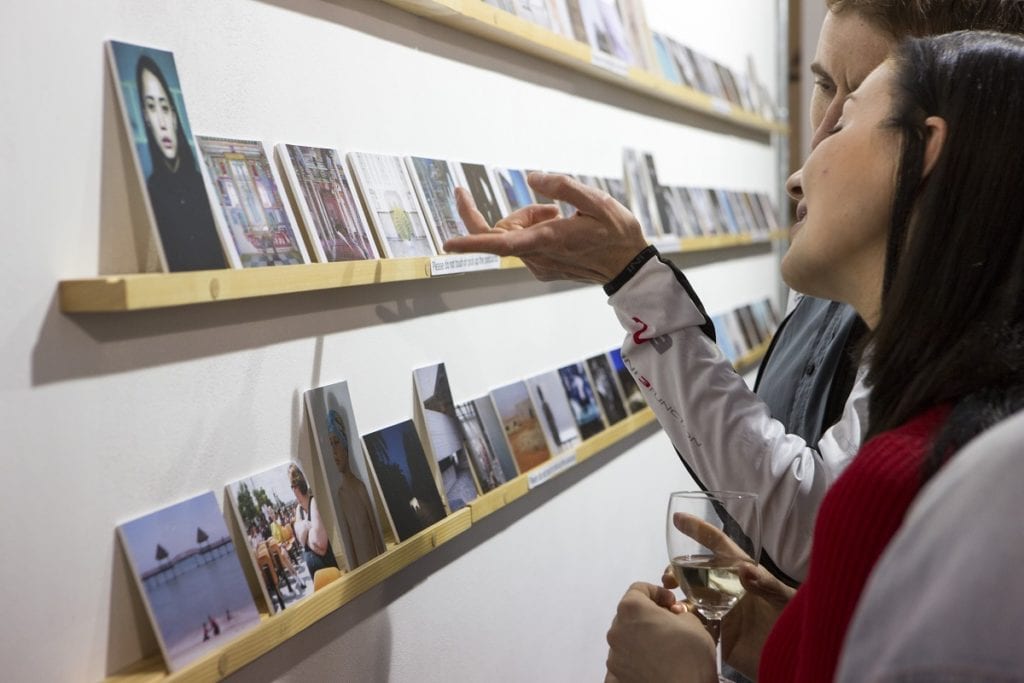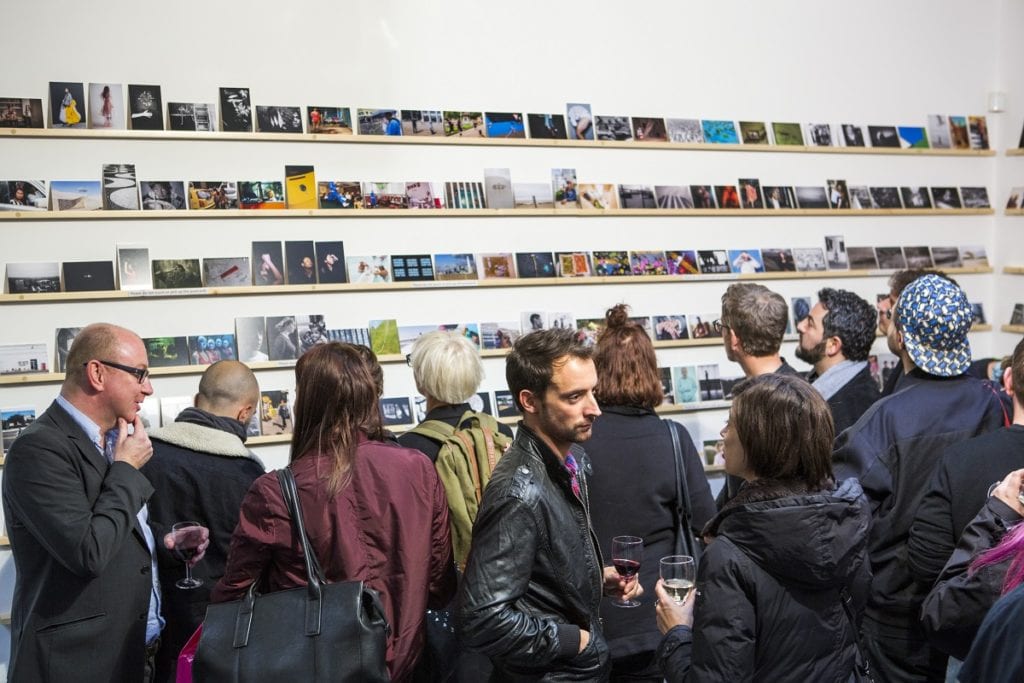A private view may generate new interest and even lead to prospective buyers, but how do you get people to attend your exhibition in the first place? Primarily, it is important to think carefully about how you promote your show. Even if you think you have perfected every detail, without effective promotion it can be difficult for your exhibition to gain the attention it deserves.
For this article, British Journal of Photography interviewed Nick Thompson, who is part of the marketing and exhibitions team at theprintspace, and Gemma Peppé, director of Art on a Postcard, to hear their thoughts on the most successful ways to promote an exhibition.
theprintspace is the UK’s leading photographic and fine art printers, who also host numerous exhibitions throughout the year at their East London gallery. Thompson is a photographer himself, and has produced a number of exhibitions of his own work.

What are some of the best ways to go about promoting your show if you’re an early-career photographer?
Nick Thompson: Post about it on your social media platforms. You may not have a large following, but you can invite friends and they can spread the word to people they know that may be interested. Also send details of the exhibition to relevant blogs and magazines as these will be the best chance for you to get the word out to a larger audience. Make sure you send them the details (press release, low-resolution images which are sized for web, links to the event pages and online details) in good time so that they have a chance to post it within their deadlines.
How important is social media for promoting an exhibition and how can photographers best use it?
Nick Thompson: Social media is crucial for promoting an exhibition. Facebook events are a very easy way to reach a large amount of people for free, and if you have some advertising budget, you can create Facebook ads to promote the event further. On Instagram, make sure you search relevant hashtags that relate to the exhibition that you are showing and add them to your posts. Include a mixture of hashtags with a large amount of posts and smaller ones too to get the largest amount of people engaging with you. Again with Twitter research hashtags and keywords that are relevant and include them in posts.
What is the importance of a good private view and how do you go about organising a successful one?
Nick Thompson: A good private view is very important. It is the first time that many people will see your work presented in the way that you intended. In terms of sales, the private view is also an excellent time to sell work as people are in a sociable setting and therefore relaxed and more open to purchasing artwork. There’s a reason that there are free drinks at private views! Another useful thing to do is collect emails from guests to start creating your own mailing list of potential buyers.

What is one of the most memorable private views you have ever attended and why?
Nick Thompson: My first solo exhibition is obviously very memorable just because it was so personal and felt like a next step for my work. In terms of other people’s exhibitions, Benjamin Murphy’s last solo exhibition at Beers Contemporary was definitely one that sticks in my mind. He’s a good friend of mine and I helped him for the week before the opening – installing the artwork which took over the whole gallery. We arrived on the opening night an hour before it was meant to open and there was a queue of people down the street! It was a very proud moment.
Lastly, what are some other more novel forms of promotion that you’ve used, seen practitioners use, or have always wanted a photographer or gallery to employ?
Nick Thompson: There are all sorts of innovative ways that I’ve seen people use to promote exhibitions. I have been to exhibitions where the first 10 people through the door are offered something free, whether that be a small 6×4 print or the first 100 through the door are given a raffle ticket to win a full-sized print.
Gemma Peppé is the campaigns and events manager for the Hepatitis C Trust and director of Art on a Postcard. Having had hepatitis C for more than 25 years, Peppé first got involved with the Hepatitis C Trust when researching her 2006 documentary Louie Me and Hepatitis C. Since being cured, she founded Art on a Postcard, a platform designed to raise money for the Hepatitis C trust through an annual secret postcard auction and the sale of fine art prints and postcard box sets. Photography on a Postcard was founded in 2017.

Art on a Postcard‘s goal is to promote awareness about and raise money for the Hepatitis C Trust. How did you come up with the idea of using art, along with exhibitions, events, and secret auctions, to achieve this?
Gemma Peppé: Actually, it’s not really about promoting awareness for the trust. That might happen as a by-product, but I realised a while ago that fundraising is about creating something that people will want. There is an inexhaustible market for painting and photography and a good mark up too. I love curating the events and putting the shows together. Generally speaking, artists are a liberal and generous group who often are only too happy to lend their talents to fundraising.
How did you come up with the idea of the secret auction and would you say it is a central part of the success of the project?
Gemma Peppé: The secret element democratises the events. Although we don’t run Photography on a Postcard as an auction, will still don’t link the photographers to their images until after the event. An emerging photographer can enter one of our open calls and get to exhibit alongside well known photographers – Wolfgang Tillmans, Karine Laval, Martin Parr, Bruce Gilden, Maggie Taylor, Lottie Davies, Nick Brandt, David Titlow, Alma Haser and Scarlett Hooft Graafland – and compete on level playing field. The wide reach comes from the fact that you get to own an original artwork or an edition of one for a price that you would never get in a gallery.
When you first began Art on a Postcard how did you go about spreading the word and finding artists who would be involved?
Gemma Peppé: I made sure key people had our press release and that I had a lot of attractive images for online image galleries. The fact that the name isn’t linked to the image means they could chose a Damien Hirst or a completely unknown artist to feature in their publication. I also used social media extensively and engaged with lots of artists, photographers and interested groups. I visited (and still do) loads of shows to get inspiration and also met artists and photographers in person so I was able to forge a connection.

How do you go about promoting the project to ensure as many people as possible engage with the auctions and attend exhibitions?
Gemma Peppé: Pretty much the same as above, although I can afford to pay a digital PR person and I don’t have to do the social media myself. You also have to find new and interesting ways to engage on social media as there is so much noise. Photography lends itself to the internet so much better than painting does. That said, it’s still the art that raises the most money.
If you are looking to exhibit your work, theprintspace, the UK’s premiere fine art printers, are all you need for printing and framing solutions, helping you get the best out of your photography. They offer archival, museum quality printing and handmade bespoke framing as standard and are always on hand to give advice every step of the way. Click here to find out more.
